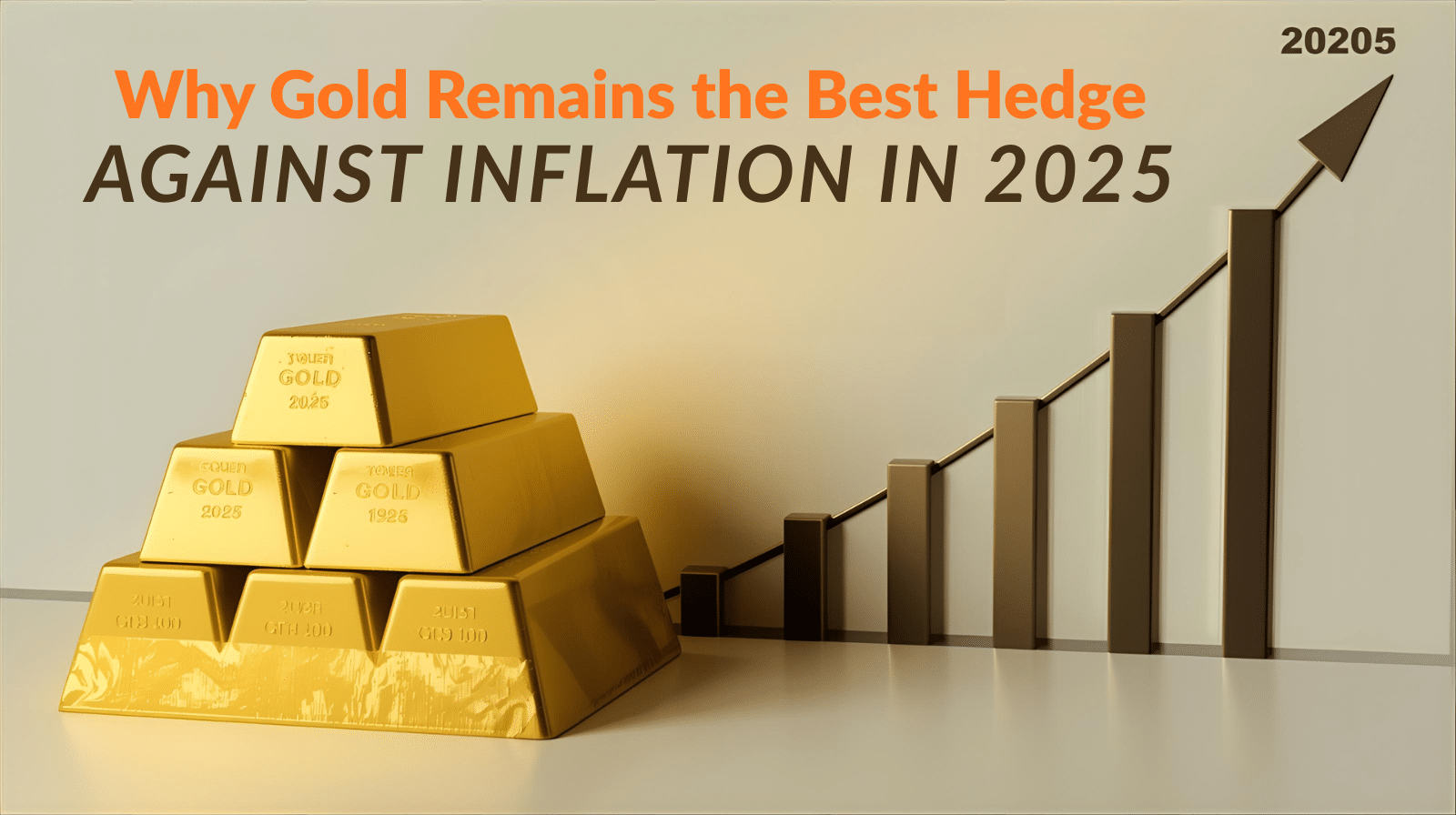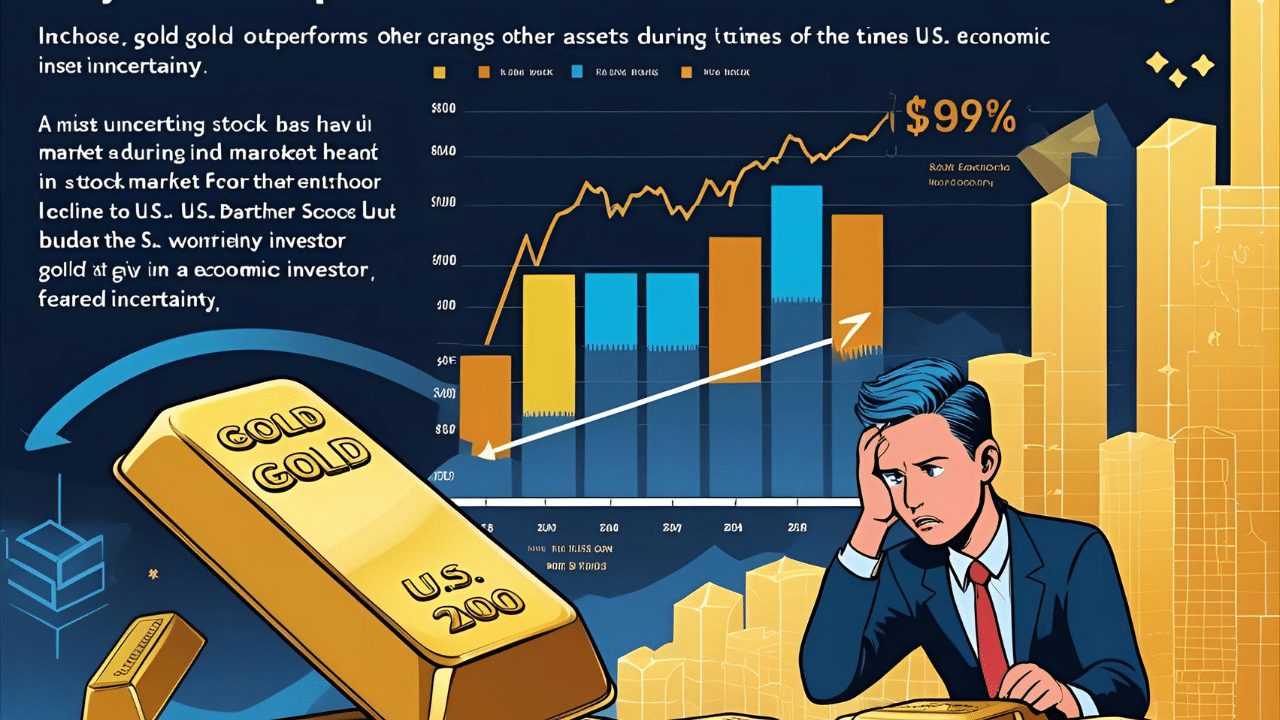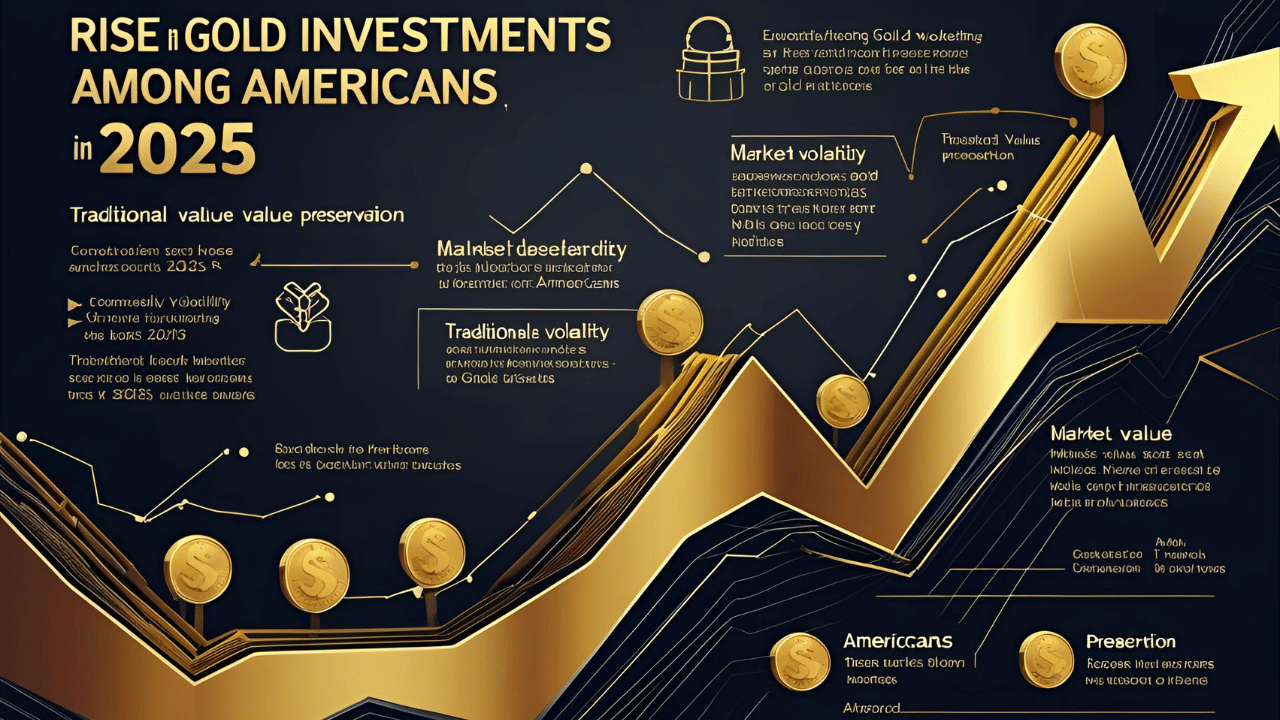
As we analyze the gold outlook, experts at CPM Group project a 13% increase in gold prices to an average of around $2,730 per ounce in 2025. This gold forecast 2025 is particularly noteworthy considering the metal’s already impressive average of $2,370 per ounce in 2024. Furthermore, central banks continue to demonstrate strong confidence in gold, with October 2024 seeing the highest monthly purchase of 60 metric tons year-to-date.
In this comprehensive analysis, we’ll examine why inflation could push gold prices even higher in 2025, explore key market dynamics, and provide actionable insights for investors considering gold as part of their portfolio strategy.
Understanding Gold’s Historical Relationship with Inflation
We’ve seen a fascinating pattern in how gold responds to inflation over the decades. Let’s explore this complex relationship that shapes our gold price prediction 2025.
Key inflation-gold correlations from past decades
The relationship between gold and inflation isn’t as straightforward as many believe. Notably, data shows that only 16% of gold price variations can be explained by changes in CPI inflation. Meanwhile, gold’s correlation to inflation has been relatively low – just 0.16 – over the past half century.
Here are the key factors affecting gold’s inflation relationship:
- Money supply growth shows stronger correlation than consumer prices
- Global economic conditions often override pure inflation effects
- Interest rate changes can significantly impact gold’s performance
How gold performed during major inflationary periods
The 1970s stand out as a remarkable period for gold performance. During 1973-1979, when annual inflation averaged 8.8%, gold delivered an exceptional 35% return. However, the metal’s track record has been mixed in other high-inflation periods. Consequently, from 1980-1984, investors actually lost 10% on average when inflation was running at 6.5%.
Lessons from previous inflation cycles
Our analysis of historical patterns reveals several essential insights. First, gold’s relationship with inflation isn’t stable – there are times when it’s positive and times when it’s negative. Additionally, gold has proven more reliable during economic expansions, except for the 2007-2009 Great Recession.
What’s particularly interesting is that gold’s performance extends beyond just consumer price inflation. Essentially, it serves as a broader hedge against currency debasement and monetary expansion. Over the long term, gold has maintained an impressive growth rate between 8.1% and 10.3% since Q1 1971, significantly outpacing the CPI’s 3.9% during the same period.
Global Inflation Outlook for 2025
Looking at the global economic landscape, we’re seeing fascinating shifts in inflation patterns that could significantly impact our gold price prediction 2025. The International Monetary Fund projects global inflation to steadily decline to 4.5% by 2025, setting the stage for interesting market dynamics.
Regional inflation forecasts and variations
We’re observing notable regional differences in inflation rates. In the G7 area, inflation increased to 2.6% in November 2024, while the euro area exceeded its monetary policy target at 2.2%. Moreover, here’s what we’re seeing across major regions:
- OECD headline inflation remained at 4.5%
- G20 inflation declined to 5.7%, reaching its lowest level since June 2023
- China’s inflation stayed close to zero at 0.2%
Impact of monetary policies worldwide
We’re noticing substantial shifts in monetary policy approaches. The Federal Reserve now projects just two rate cuts in 2025, compared to earlier projections of four cuts. Subsequently, major central banks are expected to ease their restrictive policies as inflation growth slows to manageable levels.
The Federal Reserve is anticipated to reduce its policy rate to 4%, while the European Central Bank and Bank of England will likewise move toward less restrictive levels. Nevertheless, uncertainty around demand from China and the rising dollar’s impact on oil prices will shape the inflation narrative.
Supply chain pressures and commodity prices
Our analysis shows that supply chain disruptions continue to influence inflation. Accordingly, commodity prices are expected to decline by 5% in 2025, with energy prices projected to drop by 6%.
Looking at specific commodities:
- Oil prices are forecast to average $73/bbl in 2025
- Agricultural prices are expected to decline by 4%
- Metal prices will edge slightly lower over 2025-26
These price movements are occurring amid ongoing supply chain challenges, as companies continue forming more nimble and resilient supply networks. Furthermore, increased labor costs and rising trucking rates are expected to impact supply chains throughout 2025.
Gold Price Forecast Models and Predictions
Our analysis of advanced prediction models reveals fascinating insights into gold’s potential trajectory. Specifically, the Random Forest Regression model has demonstrated remarkable accuracy of 98.53% in predicting gold prices, outperforming traditional Linear Regression models which achieved 85.86% accuracy.
Technical analysis projections
We’ve observed that gold’s technical indicators are showing strong bullish signals. Undoubtedly, the price remains above both the 50-day moving average at $2,663 and the 100-day moving average at $2,560. The RSI reading of 65.5 suggests room for continued growth, altogether painting a positive technical picture.
Fundamental valuation metrics
Our fundamental analysis highlights several key metrics driving gold valuations:
- Dollar index and real yields correlation
- Central bank purchase patterns
- U.S. debt levels and inflation impact
- ETF investment flows
- Market disruption factors
Expert price targets for 2025
We’re seeing a strong consensus among leading financial institutions regarding gold’s outlook. Here are the notable price targets from major institutions:
| Institution | 2025 Price Target |
|---|---|
| Citibank | “Revised Gold Price Predictions for 2024-2025 Financial Institution/Analyst |
| Bank of America | $3,000 [47] |
| Goldman Sachs | $3,000 [47] |
| World Gold Council | $3,000 [47] |
| ANZ | “Revised Gold Price Predictions for 2024-2025 Financial Institution/Analyst |
Generally, these projections are supported by persistent global uncertainty and central bank buying patterns. The World Gold Council’s survey indicates continued strong central bank demand, which could push prices toward these targets.
Overall, our technical models and fundamental analysis suggest a positive trajectory for gold prices in 2025. The convergence of expert predictions around the $3,000 mark reflects growing confidence in gold’s upward momentum, supported by both quantitative models and qualitative market factors.
Supply-Side Factors Affecting Gold Prices
The supply side of the gold market presents compelling evidence for our gold price prediction 2025. Presently, we’re witnessing unprecedented challenges in gold production that could fundamentally reshape market dynamics.
Mining production costs and inflation
The mining sector faces mounting cost pressures, with global average all-in sustaining costs (AISC) reaching $1,388 per ounce in Q2 2024. Essentially, this represents a 6% year-over-year increase. We’ve observed that labor expenses are primarily driving these increases, with Australian mining wages alone rising by 4% annually.
Regional AISC variations paint an interesting picture:
| Region | AISC (USD/oz) |
|---|---|
| North America | $1,522 |
| Oceania | $1,132 |
| South America | $1,372 |
Global supply chain disruptions
Rather than improving, supply chain challenges continue to impact gold production. Notable disruptions include:
- Rising security costs in high-risk areas
- Increased logistics expenses due to transportation constraints
- Labor shortages affecting operational efficiency
These factors have contributed to a 3% decline in total gold production, with some regions experiencing more severe impacts than others.
New mine development outlook
Looking ahead, we’re facing a critical juncture in gold production. Namely, global output is expected to peak at 3,250 tons in 2025, followed by a projected decline that could reshape our gold forecast 2025. Even more concerning, production might drop by 17% by 2030.
The challenges stem from several factors. First, high-grade, well-located deposits are becoming increasingly scarce. Second, despite current high profitability, we’re seeing insufficient investment in new greenfield projects. Third, the industry faces declining ore grades and aging mines.
China, contributing 11% of global output, faces modest reserves relative to its production rate. Similarly, geopolitical pressures in regions like West Africa have led to increased resource nationalism, with countries such as Mali and Burkina Faso nationalizing operations.
What’s particularly striking is that recent gold discoveries have been notably smaller, with none of the findings from the last decade making it to the list of the 30 largest gold discoveries. This trend suggests that maintaining current production levels will become increasingly challenging, potentially supporting higher gold prices in 2025 and beyond.
Investment Strategies for Gold in 2025
As investment advisors, we believe that crafting the right gold investment strategy for 2025 requires a careful balance of allocation, timing, and investment vehicle selection. Indeed, with gold prices reaching historic highs, making informed decisions becomes more crucial than ever.
Portfolio allocation recommendations
We recommend maintaining gold exposure between 5% to 10% of your total investment portfolio. Essentially, this moderate allocation helps protect against market volatility while avoiding overexposure to a single asset class.
For investors with substantial assets, we suggest the following distribution:
- Physical gold: 60% of gold allocation
- Gold-backed ETFs: 30% of gold allocation
- Mining stocks: 10% of gold allocation
Notably, investors with smaller portfolios might benefit from focusing primarily on gold ETFs, as they offer better liquidity and lower entry costs.
Physical vs paper gold considerations
We’ve observed a significant shift in how investors approach gold investments. Here’s our comprehensive comparison of both options:
| Aspect | Physical Gold | Paper Gold |
|---|---|---|
| Storage Costs | Required | None |
| Liquidity | Lower | Higher |
| Counterparty Risk | None [73] | Present |
| Market Access | Limited | Immediate |
| Price Correlation | Direct | May vary |
Certainly, physical gold offers unique advantages in times of financial crisis. Nevertheless, paper gold through ETFs provides easier access and better liquidity for active traders.
Timing entry and exit points
For 2025, we’re focusing on several key indicators to optimize entry and exit points:
- Technical Analysis Indicators:
- Price patterns and chart analysis
- Moving averages for trend confirmation
- Volume indicators for market sentiment
- Market Sentiment Factors:
- Central bank buying patterns
- Geopolitical events impact
- Economic indicator releases
Primarily, we recommend using the trend-following strategy, which has proven reliable in gold markets. This approach involves:
- Identifying clear market trends using moving averages
- Entering positions during price pullbacks
- Setting trailing stops to protect profits
For risk management, we suggest implementing stop-loss orders below support levels. Furthermore, considering the projected price range of $2,450 to $2,950 per ounce, investors should plan their entry points strategically.
In terms of tax considerations, we’ve found that utilizing retirement funds through gold IRAs can provide significant advantages, including tax deferrals. Additionally, digital platforms have made it easier to purchase and manage gold investments while benefiting from institutional custody services.
Looking ahead, central banks’ continued accumulation of gold reserves and potential trade tensions might create favorable entry points throughout 2025. Therefore, we recommend maintaining a flexible approach, ready to adjust positions based on market conditions and our gold forecast 2025.
Conclusion
Gold stands ready to maintain its upward trajectory through 2025, supported by multiple market factors we’ve analyzed. Market dynamics point toward continued strength, with expert predictions clustering around the $3,000 mark.
Our research shows that while inflation alone doesn’t determine gold prices, the combination of monetary policy shifts, supply constraints, and strong central bank demand creates a compelling case for higher valuations. Production challenges, particularly the expected peak output of 3,250 tons in 2025, will likely add upward pressure on prices.
Successful gold investment strategies require careful consideration of allocation limits and timing. Therefore, we recommend maintaining gold exposure between 5% to 10% of total portfolio value, split across physical holdings and paper gold investments. This balanced approach helps protect against market volatility while capturing potential gains.
The technical indicators remain firmly bullish, though investors should stay alert to market shifts and adjust their positions accordingly. Rather than viewing gold as a pure inflation hedge, we see it as a strategic asset that offers portfolio diversification and wealth preservation benefits during uncertain economic times.







